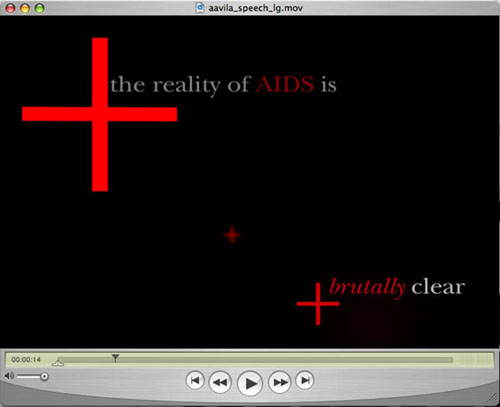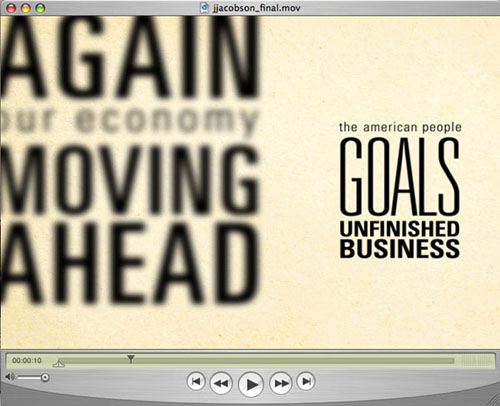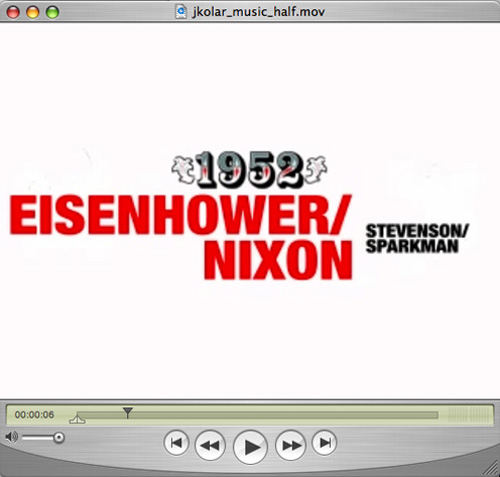::::::
associate professor Andrea Herstowski
University of Kansas | School of Architecture, Design and Planning | Visual Communication Design | Graphic Design
______________________________
:- Homepage:
______________________________
:- Teaching Statement
______________________________
Selected Class Projects
:- Bookcovers: Developing a Series
:- Famous Speech: Motion vs. Print
:- Creating Interaction
:- Workbook: Type Rules Illustrated
:- Senior Portfolio Class
______________________________
Sample...
:- Syllabus
:- Rubric
:- Student Observations/Reflections
:- Class Portal
:- Class Project Outline
______________________________
Recognition
:- Teaching/Student Awards
______________________________
Contact Info
e: herstow@ku.edu
c: 795 393 9382
:::::::::::::::::::::::::::::::::::::::::::::::::::::::::::::::::::::::::::::::::::::::::::::::::::::::::::::::::::::::::::::::
20th Century Speech: Motion verses Print
Form Follows Feeling — Turner Duckworth
The students choose a famous 20th Century Speech and create a typographic expression/ visualization it. They are required to solve the problem visually in two medias: in print and in motion. We the audience should “see” the mood, tone, intonation, emphasis, personality, feeling, stresses, pauses of the speech. The two medias give the students opportunity to learn first hand and experience what can be done in print and not in motion and vice-versa.
:::::::::::::::::::::::::::::::::::::::::::::::::::::::::::::::::::::::::::::::::::::::::::::::::::::::::::::::::::::::::::::::

Alexandra Avila | click here to watch motion | click here to download process book pdf

Jordan Jacobson | click here to watch motion | click here to download process book pdf
:::::::::::::::::::::::::::::::::::::::::::::::::::::::::::::::::::::::::::::::::::::::::::::::::::::::::::::::::::::::::::::::
Get out the Vote project crossed two 2 classes. The students produced a poster in Patrick Dooley's Typography 03 class and produced the motion in my Graphic Design 02 class, the students are enrolled in the 2 classes in the same semester. All the posters and motion pieces where on exhibition in the Kansas City Public Library the weeks before the 2008 presidential election.

Jarrad Kolar | Get out the Vote. AIGA Award, 2008 | click here to watch motion |

Kimberly Patton | Get out the Vote. | click here to watch motion |
:::::::::::::::::::::::::::::::::::::::::::::::::::::::::::::::::::::::::::::::::::::::::::::::::::::::::::::::::::::::::::::::
Reflections/Observations
The Visual Communication major is very print media heavy (designing books, magazine, posters, branding). We have begun to introduce different medias (web, motion, interaction, iphone apps) to give the students a full spectrum of media. More and more professional projects span across print, TV, the internet, social media.
I developed this project a few years ago when motion was first being introduced into our curriculum. The project needed to be typographic, force the students to figure out how to show emotion/feeling, how to use and manipulate sound, and get the students to an advanced level in a software that they up to now had very little if any experience using. I took advantage the content of the project to also compare how a media can change an experience.
How does the media affect the message or experience?
Student 1. By executing this project via motion graphics, a whole world of possibilities is available for one to try and convey things that may not be possible in print. With motion, things become much more visual, and the amount of information that is given to the viewer is greatly increased. Movement can also visually stimulate the viewer on a level that print may not be able to achieve.
Student 2. Having a visual aid assists in conveying the experience and digesting Nixon’s speech. By using a sound/ motion-based media, I can help emphasize parts of the speech in any number or ways. I can draw attention to particular words and phrases through motion transitions, enlarging or shrinking text, etc. Sound is also a huge factor in discerning mood. The music alone can turn a solemn speech into an positive experience, and vice-versa. Even silence can be a powerful tool in motion-graphics.
:::::::::::::::::::::::::::::::::::::::::::::::::::::::::::::::::::::::::::::::::::::::::::::::::::::::::::::::::::::::::::::::
A typical full class critique is effective about twice during a motion project. The full class crit gives everyone the opportunity to see what everyone else is doing but for in-depth feedback motion has to be watched multiple times, so I have more small group feedback sessions. I developed a rubric for students to use when discussing each other's work.
The rubric handed out to students to use in small groups. The sheet leads the student what to look for and comment on, it also keeps them on task. Each student fills out a form for every student in the group. If the group is five students, each student has five sheets of feedback to refer to when refining their solution.
:::::::::::::::::::::::::::::::::::::::::::::::::::::::::::::::::::::::::::::::::::::::::::::::::::::::::::::::::::::::::::::::
BE CRITICAL (now is the time!)
Small Group Crit
Please meet in small groups and be critical today. Take notes on what your group says.
MOOD/TONE/EMOTION/FEELING...
1. When watching the speech what mood, tone, emotion do you feel?
___
___
___
2. What is the mood, tone, emotion of the speech? Do they match? How can it be better?
___
___
___
TIME_ING
1. Duration over all feeling: too fast too slow – be critical here can you read it, are you supposed to?
___
___
___
2. Where should there be a pause for effect? L O N G pause = stress or rest
___
___
___
TRANSITIONS
1. Planned and appropriate? (meaning are there effects for effects sake or do they have meaning?
___
___
___
2. Flow, relationship from one frame to the next, to the one before it...
___
___
___
3. Redundancy for effect.
___
___
___